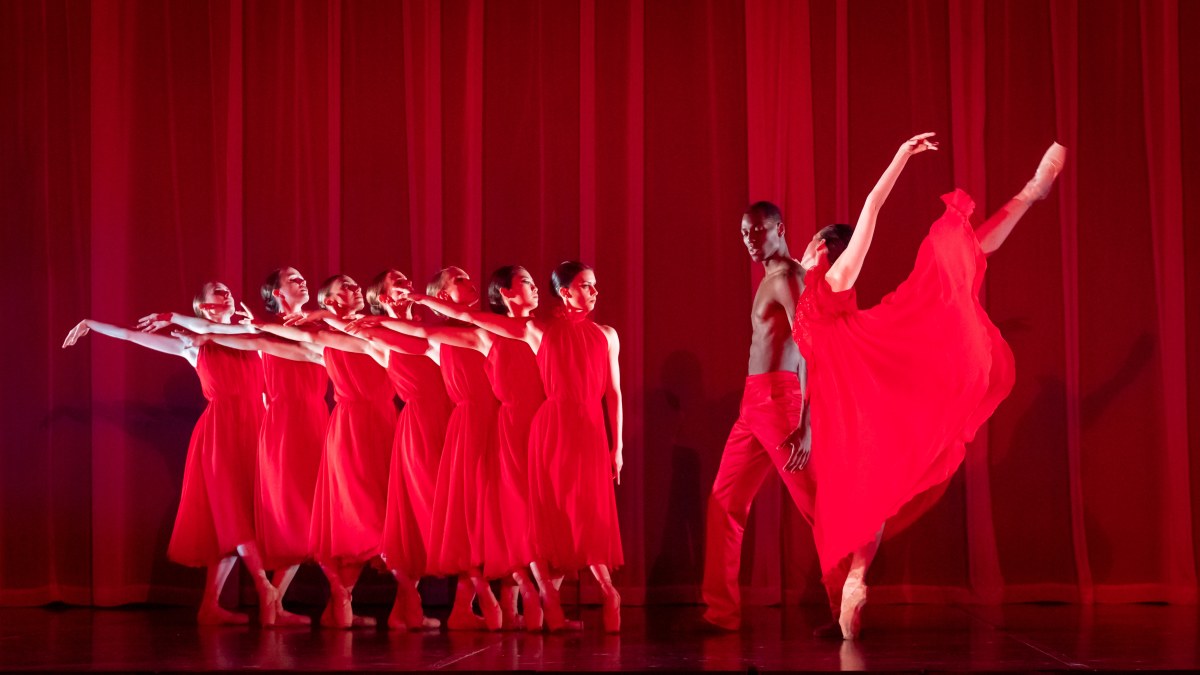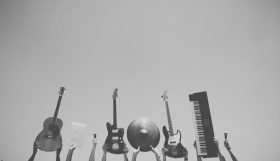Goldberg Variations is a new classical dance work choreographed by Natalie Weir for the West Australian Ballet (WAB). The One Act ballet tells the story of an insomniac man in various hallucinatory states of waking and dreaming. During his phantasmagoria, he is visited by four women with whom he has had a relationship in the past.
The choreography is inspired by Johann Sebastian Bach’s ‘Aria with Variations in G’ (1741) known as The Goldberg Variations and considered an ambitious work scored for keyboard (harpsichord). The music begins with an opening Aria followed by 30 Variations and is named after Johann Gottlieb Goldberg, who was the private harpsichordist to Count Hermann Karl von Keyserling. The Count suffered from insomnia and commissioned the music for listening during his sleepless nights. Goldberg was a pupil of Bach and played the variations for Keyserling.
Bach’s arranged work is performed by the stringed instruments of a Chamber Orchestra from the West Australian Symphony Orchestra and led by musician, Riley Skevington. The musicians are made visible on a raised thrust in the theatre, allowing for the movement of instruments to be seen but without obscuring the dancers on stage. Skevington explains that the ‘Chamber Orchestra is able to pay respect to Bach’s original scoring, while allowing the listener to explore new musical avenues’.
Aurélien Scannella, WAB Artistic Director, made a shrewd decision in commissioning Weir to choreograph to Bach’s iconic music. The Brisbane-based choreographer has created several works for both classical and contemporary dance companies and as Artistic Director of Expressions Dance Company (2009-2018) honed a style distinctive for inventive partner work and strong human connection.
In Goldberg Variations, Weir works with the strengths of the classical dancers, incorporating contemporary elements as she focuses on telling a story through undulant partnering.
Bruce McKinvern’s modern costume design incorporates references to the Baroque era and is combined with an uncluttered set design. Four white curtains are used as opaque backdrops, allowing for playful suggestions of dreaming and waking and various stages in-between.
The lighting design by Matthew Marshall enhances story, creating atmospheric illusory states interspersed with bold lighting washes to indicate changes in relationships.
The dance work begins gently and unfolds simply. The curtain rises on the Lead (Oscar Valdes) resting on a sofa bed, his restlessness embodied in slow movement. Valdes isolates and flexes his left wrist, reaches along the bed, and we see the beginning of a motif which is repeated and developed through successive variations. Four scrim curtains begin to descend, heralding the beginning of a series of dreamlike states. The sheer curtains allow for partitioning of spaces, creating a sense of blurred realities and the suspension of time.
The use of Mirror of Lead (Izaak Westhead) creates split worlds and a second self, which is sensitively portrayed by Westhead as he emulates Valdes in meticulously mirrored gestures.
The choreographic structure is clear, determined by the narrative of four women as muses visiting the insomniac man. The White Muse (Nikki Blain) evokes innocence and playfulness as the man dances with the girl of his youth, their pas de deux light and romantic: a yearning to fall in love for the first time. Elements of neo-classical style are blended with contemporary as they waltz in a wash of white light.
The Blue Muse (Chihiro Nomura) provokes more complex emotions, embodied in partnering movements and enhanced by apt lighting choices. A pas de six is constructed as two pas de trois offers a depiction of separation, longing, and memory. Nomura and Valdes reach for each other, their movement passionate and precise, yet each is restrained by others and unable to disentangle from their respective trios.
The Pink Muse (Glenda Garcia Gomez) offers a quirky departure from neo-classical vocabulary, as Gomez’s isolated hand gestures hiccup in rapid staccato movement. The allusion to the Baroque era with costume and towering wig is an acknowledgment of the music, the stylistic choice a curiosity in search of a little frivolity.
The Red Muse (Polly Hilton) is held aloft for most of her scene with Valdes. Hilton is out of reach; four male dancers supporting her through a series of lifts, extensions, and turns as she is carried through space, just beyond the man’s reach for her.
The visitations are punctuated by transitions that include various combinations of couples elegantly patterning pas de deux. Weir favours the use of canon and some of the most delightful moments are extended phrases of canon for partners with variations in floor patterns. Four Men in black (Ludovico Di Ubaldo, Jessy Chraibi, Rab Flanigan, Matej Perunicic) appear to disrupt the narrative, dressing Valdes in different clothing to shift from one scene to the next using strength and humour.
The ending is neat: each of the four women return for a final farewell, then the man returns to his sofa bed, alone and awake. Valdes repeats phrases from the opening Aria, his motif revisited gently as a delicate solo gesture.
Read: Musical review: Freaky Friday
Goldberg Variations is a charming study in partnering framed by story. The dancers move through the music as ethereal fragments of memory while the music elevates the narrative as an offering of beauty.
Goldberg Variations
West Australian Ballet with West Australian Symphony Orchestra
His Majesty’s Theatre, Perth, Western Australia
Artistic Director: Aurélien Scannella
Choreographer: Natalie Weir
Set & Costume Designer: Bruce McKinven
Lighting Designer: Matthew Marshall
Music: Johann Sebastian Bach
Music Arranger: Bernard Labadie
Music Director: Riley Skevington, Violin
Ticket: $26-$130
Goldberg Variations will be performed until 24 September 2022.





